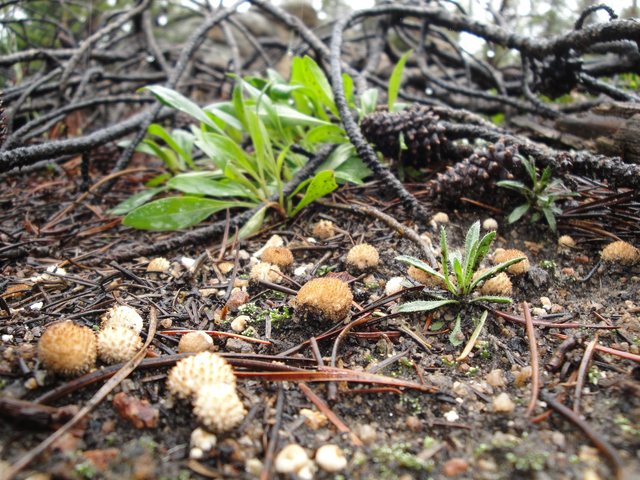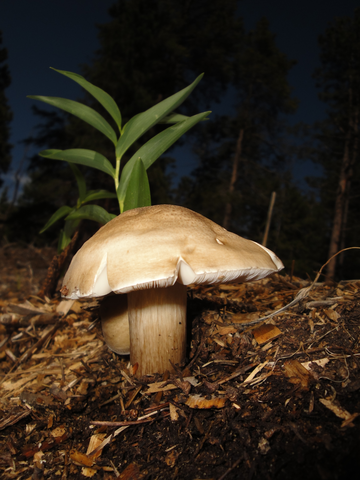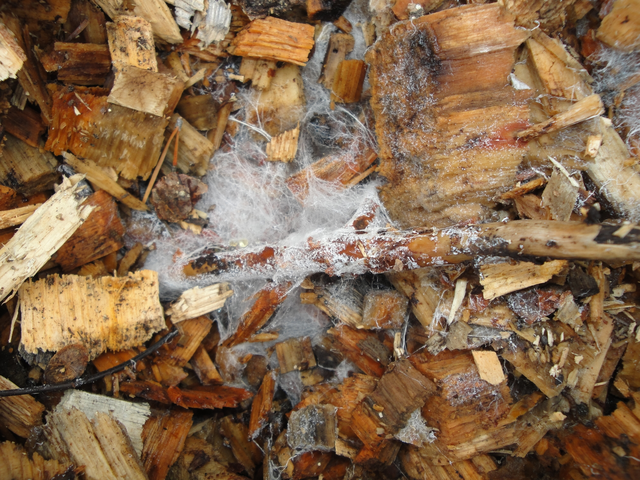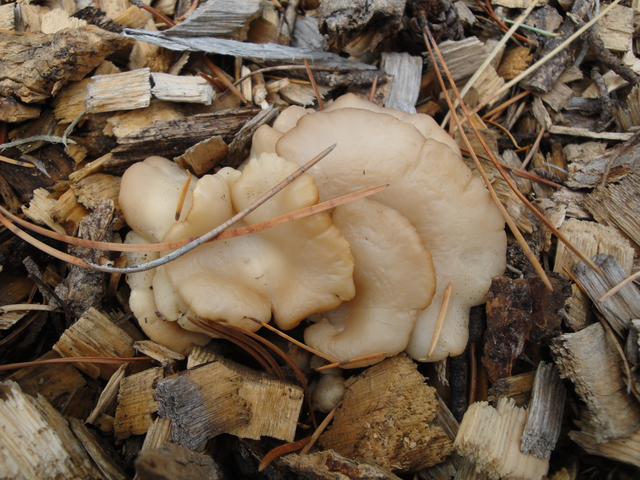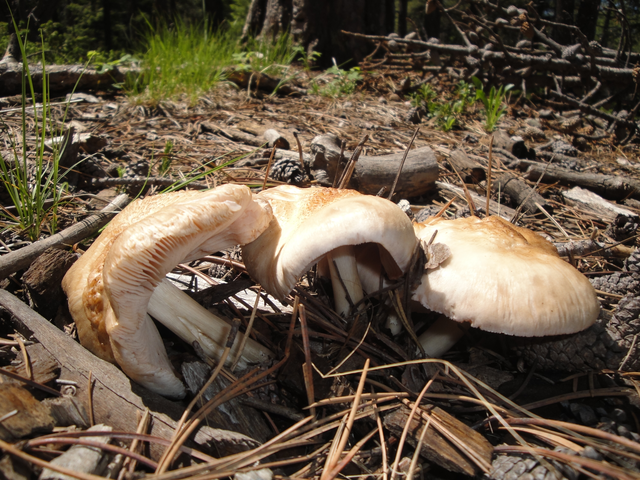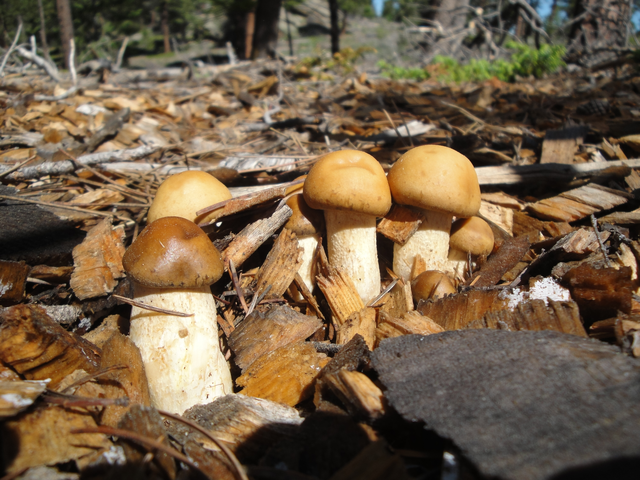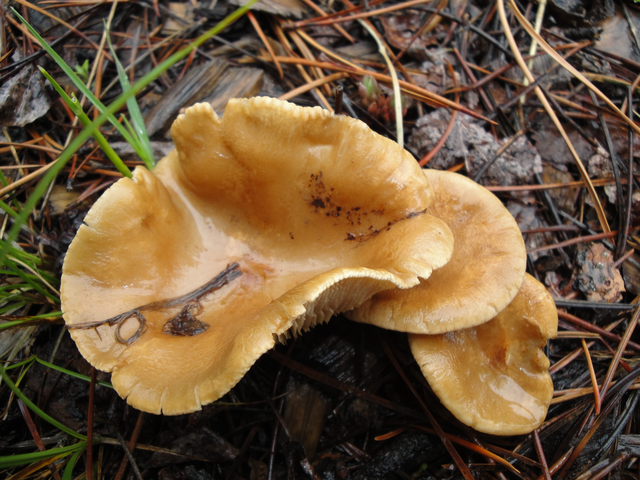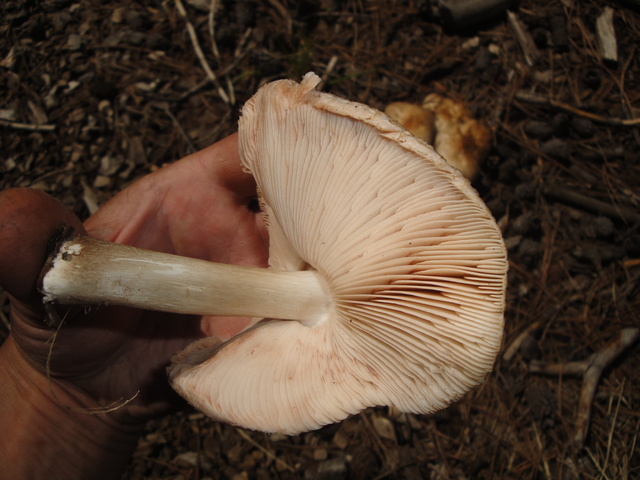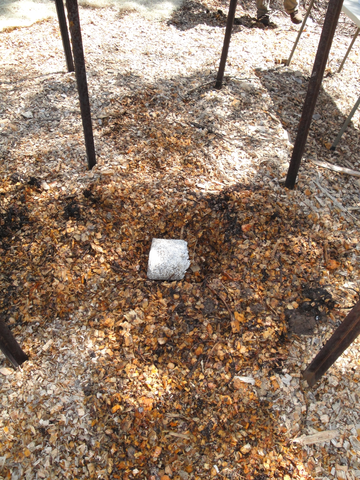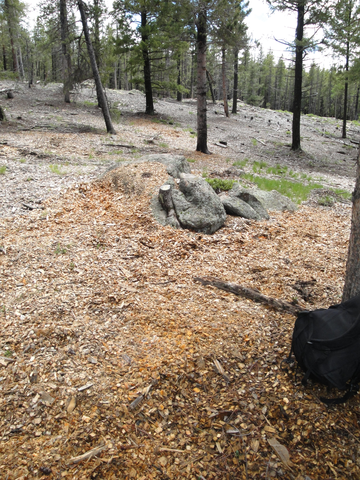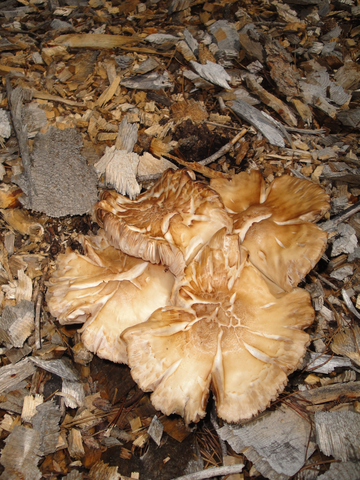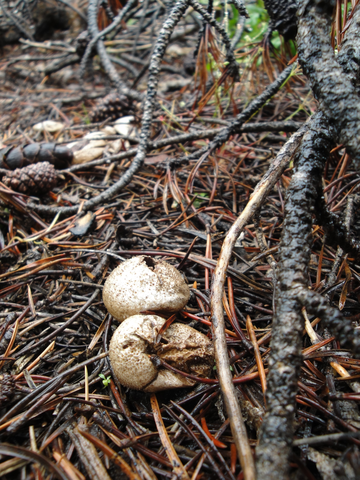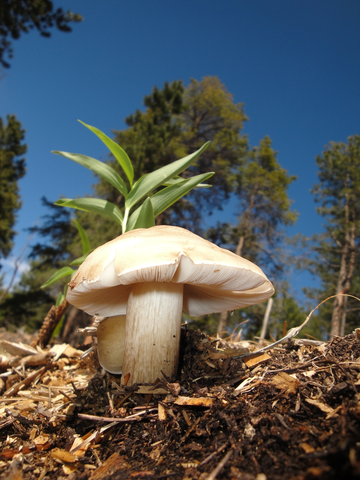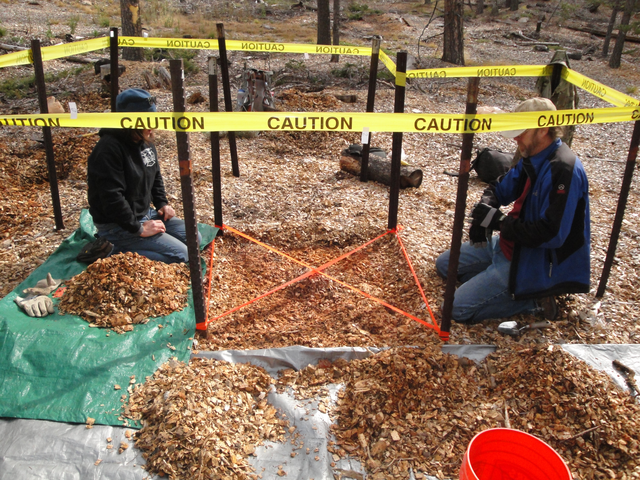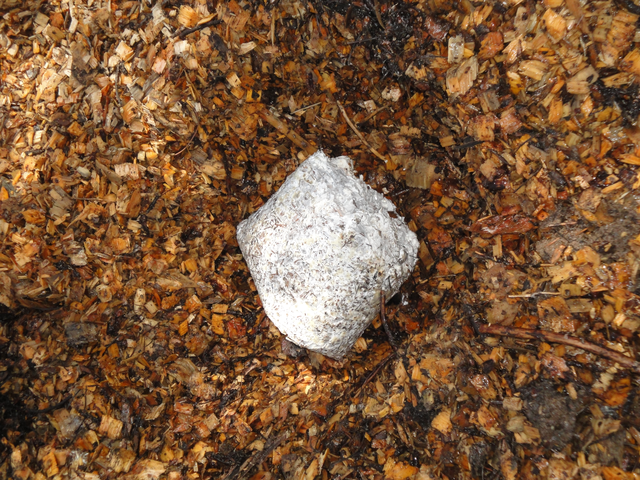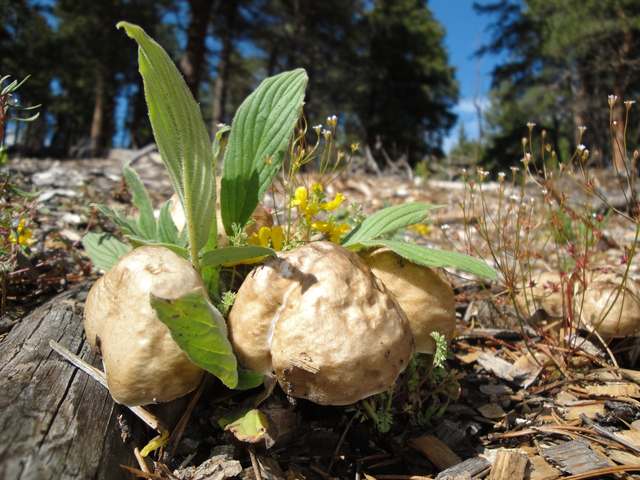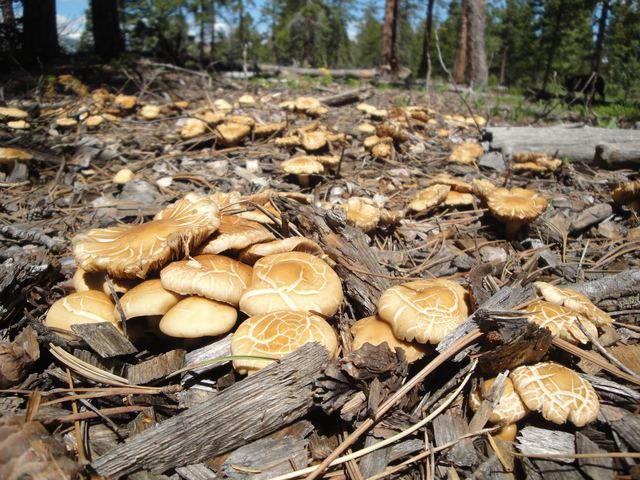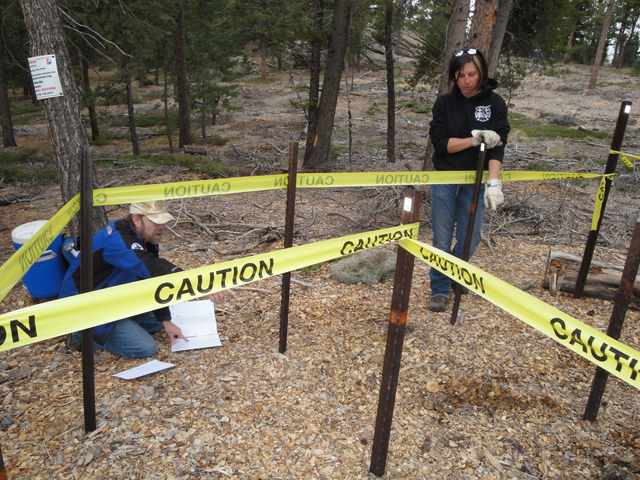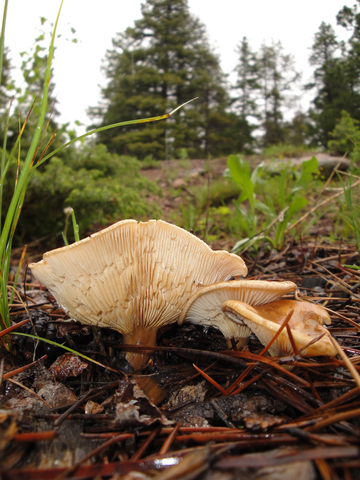Mycoprospecting is a very useful tool for finding volunteer mushrooms/mycelliums that are already inhabiting a site. One of the first things I did when we went up in the spring was to check the roadsides while the packers were getting the horses and mules prepared to haul the equipment up the hill. I didn’t find a lot of mushrooms but I did find the three pictured. I collected examples of them all for the CUSP tissue library. Once we got up the hill (an adventure in of itself) and settled in, I decided to take a look around the actual test site. One of the first things that I found was the happy mycellium pictured. True, it’s of an unknown species but the bottom line is it’s doing the work that we want to have done. Biodiversity has a lot to be said for it. You notice I took a second picture of the mycellium back a ways. This is always an excellent idea as it allows you to find the exact spot where you found it the first time when you come back. The coolest thing that I found were the Pluteus cervinus or deer mushrooms that were fruiting 100 yards or so down the hill from the Pine Oyster test site. These things were absolutely the largest examples of the species that I’ve ever come across. I looked them up in the book and they’re supposed to grow up to 4 ¾ inches. These suckers were six ½ inches across super thick and in clusters as you can see in the pictures. Mycellium was going crazy in the wood chips. These mushrooms are generally kind of thin and flaccid but these guys were super beefy and very tasty. Bonus! And that my friends, is why you mycoprospect.
Ps. I just took a peek at the wood chips that I took from the site and they are waking up very happy, have to give them a feed of fresh chips in a few days.

